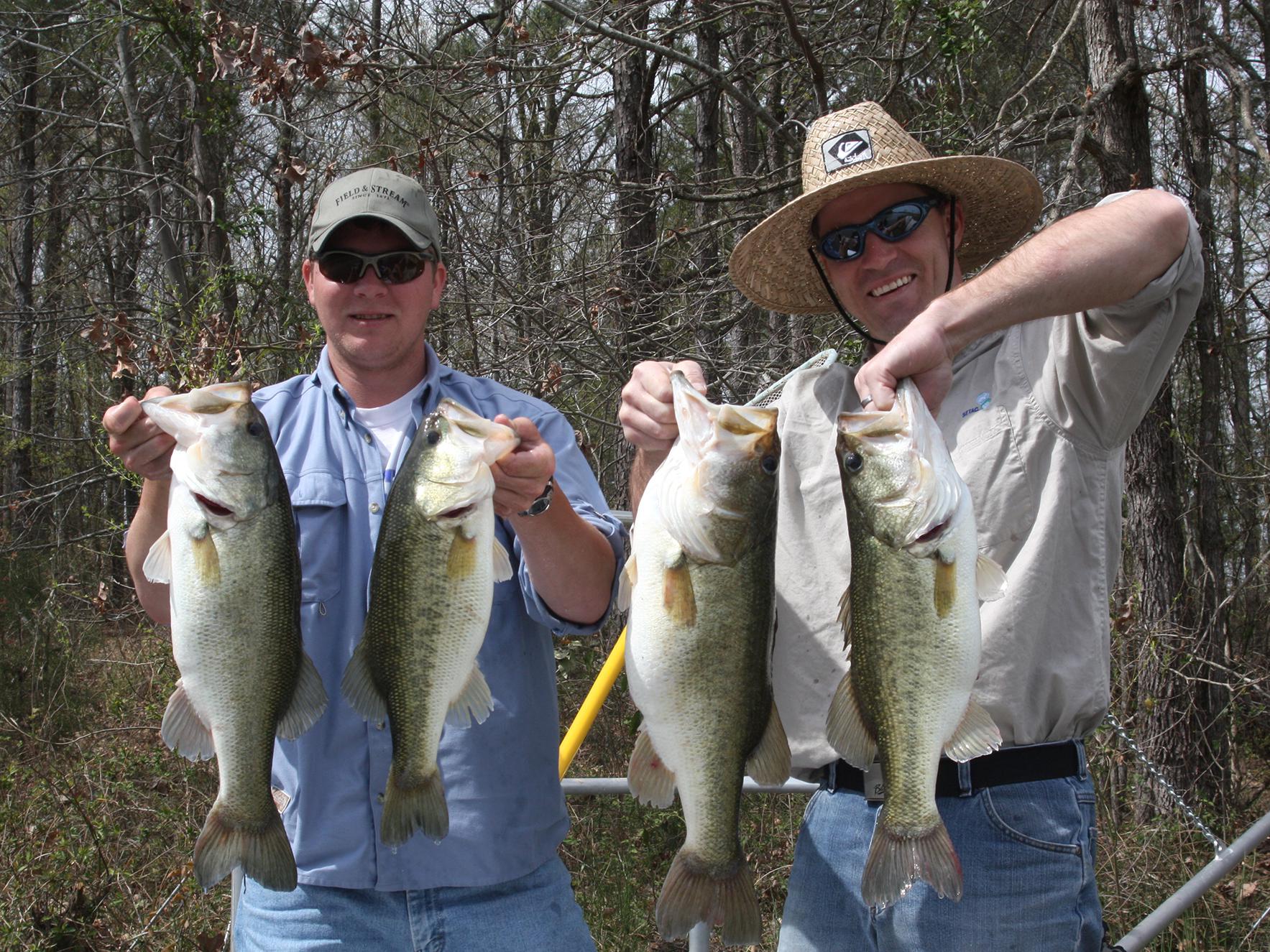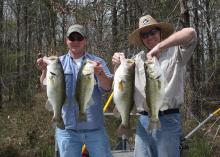Information Possibly Outdated
The information presented on this page was originally released on August 19, 2016. It may not be outdated, but please search our site for more current information. If you plan to quote or reference this information in a publication, please check with the Extension specialist or author before proceeding.
Select largemouth bass genetics for your pond
STARKVILLE, Miss. – There is no easy answer to the debate for the best type of bass to stock in a Mississippi pond.
The genetic differences between Florida bass, northern bass and hybrid bass are often relatively subtle. Fish management plays a greater role in meeting the pond owner’s desire for growing trophy bass, but the decision is still an important one.
Largemouth bass come in two genetic varieties. Northern bass are native to most of the eastern and central U.S., and Florida bass are native to the subtropical peninsula of Florida. Where the two populations overlap from Georgia to Mississippi, there are natural crosses between them. These intergraded populations vary considerably in the percentages of northern and Florida genetics they contain because centuries of interbreeding have mixed up the gene pool.
Many fish hatcheries produce and sell a true hybrid, which is half Florida, half northern bass. This cross is generally known as an F1 hybrid bass because it is a first generation cross between the two species.
Each species and their hybrid have pros and cons. Florida bass grow the largest at southern latitudes. Most of the largest bass caught generally have all or mostly all Florida bass genetics. However, some research and angler reports suggest that Florida bass are more difficult to catch than northern bass, so what good is a big fish if you can’t catch it?
First generation hybrids between these two tend to exhibit the benefits of both species -- good growth and relatively easy to catch. This is called hybrid vigor. The downside to hybrid bass is that they will spawn after two or three years, creating an F2 generation (two F1 parents spawn together). There is no guarantee that their offspring will have the same hybrid vigor because of the random genetic reorganization that occurs during mating.
In some cases a phenomenon called outbreeding depression can occur, which causes slower growth, reduced survival, or low spawning success. This can get worse each successive generation. As generations continue to interbreed, the lake ends up with a bunch of Fx generation bass (mixture of different generations), with genetics that are likely to be less well adapted compared to the first hybrid or either parent species. This is the reason vegetable farmers love to grow first generation hybrid crops; they grow large, but then they never use the first generation for further breeding of generation crops. There are simply too many unpredictable genetic combinations produced.
If you have first generation hybrids in your pond, don’t panic! Fish management, including proper harvest, fertilization and prey supplementation, usually outweighs genetics when it comes to growing big bass. The proportion of fish showing the best traits will likely decrease in each successive generation. So trophy potential may decline, but it never fully goes away.
There are some things you can do to maximize success with first generation hybrids and avoid outbreeding depression. Apart from intensively managing population size and food production, probably the best advice is remove every F2 or Fx bass caught, and periodically restock with new F1 hybrids. Although time consuming, marking every F1 fish at stocking with a fin clip will make this much easier. This approach will ensure that there are always some first generation hybrids in your pond with the best available genetics to grow large.

Editor’s Note: Extension Outdoors is a column authored by several different experts in the Mississippi State University Extension Service.





